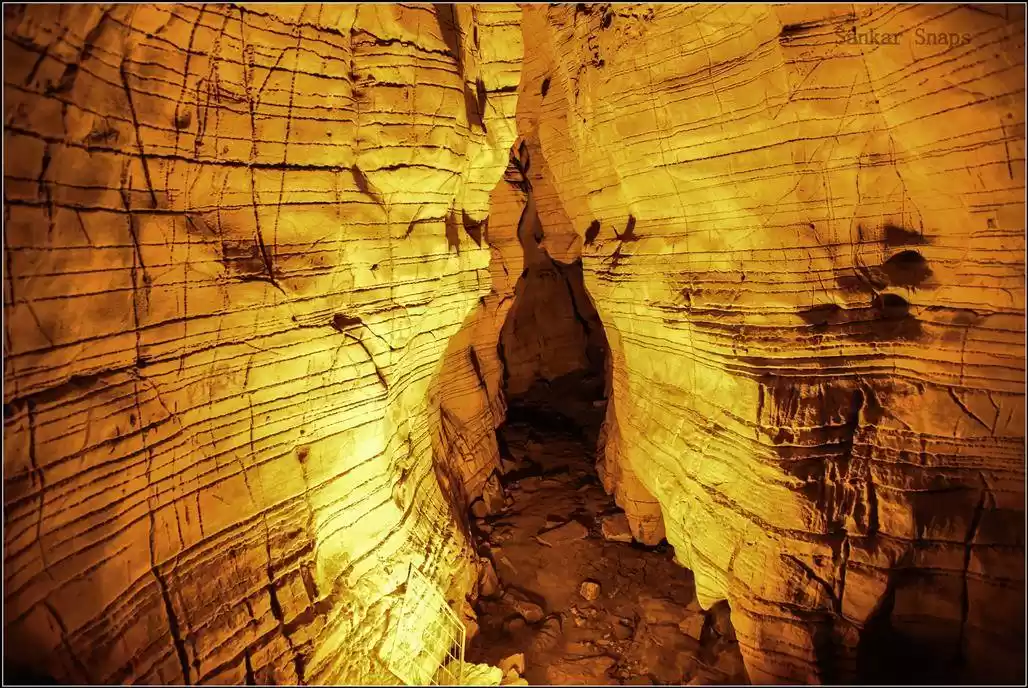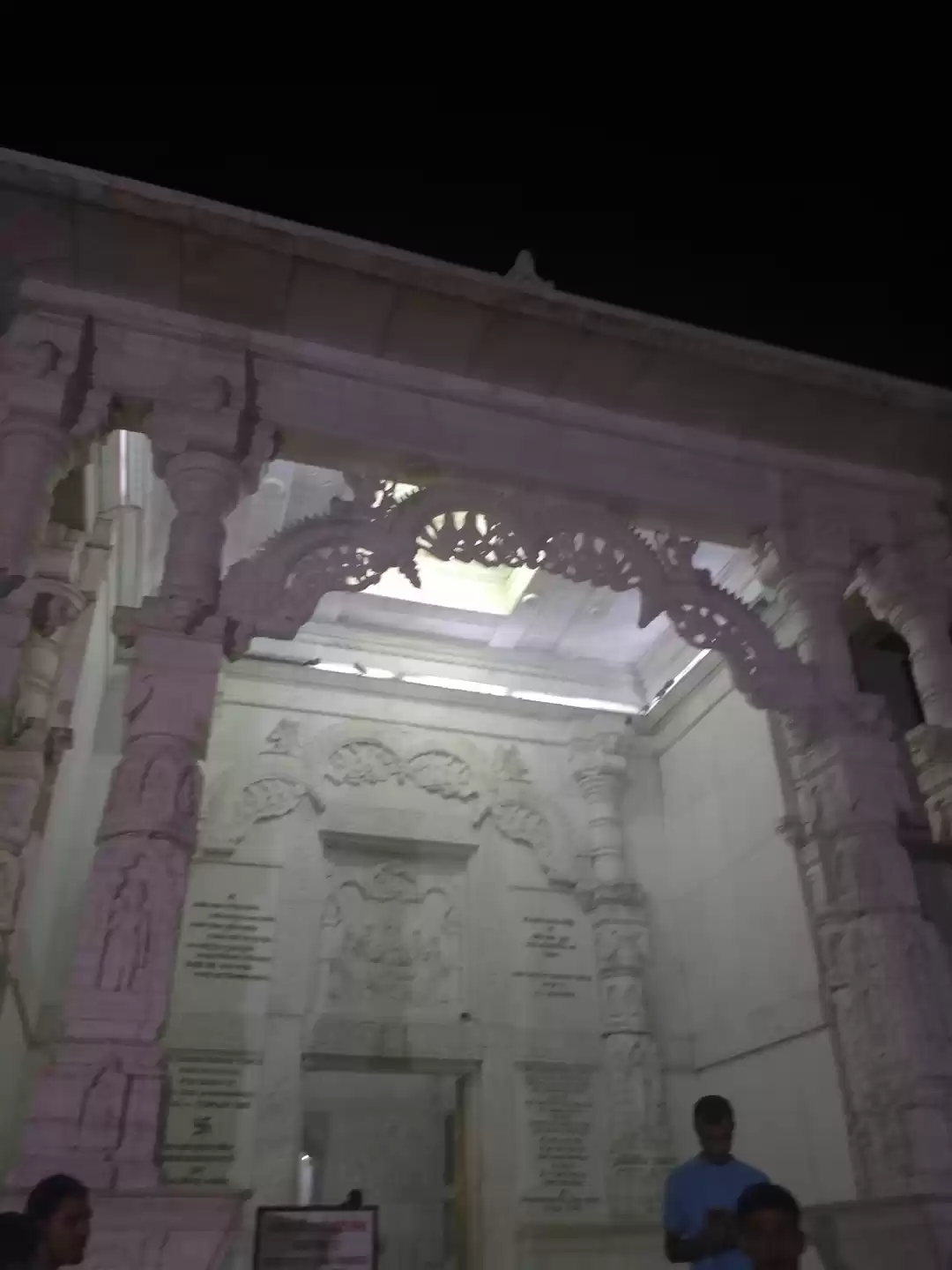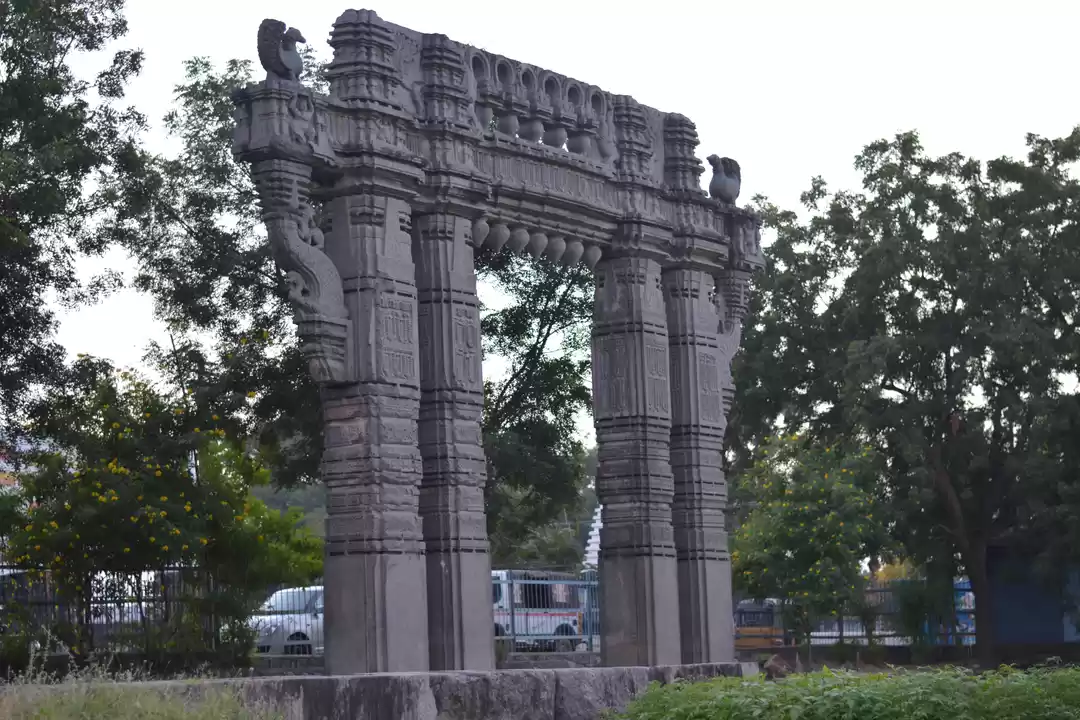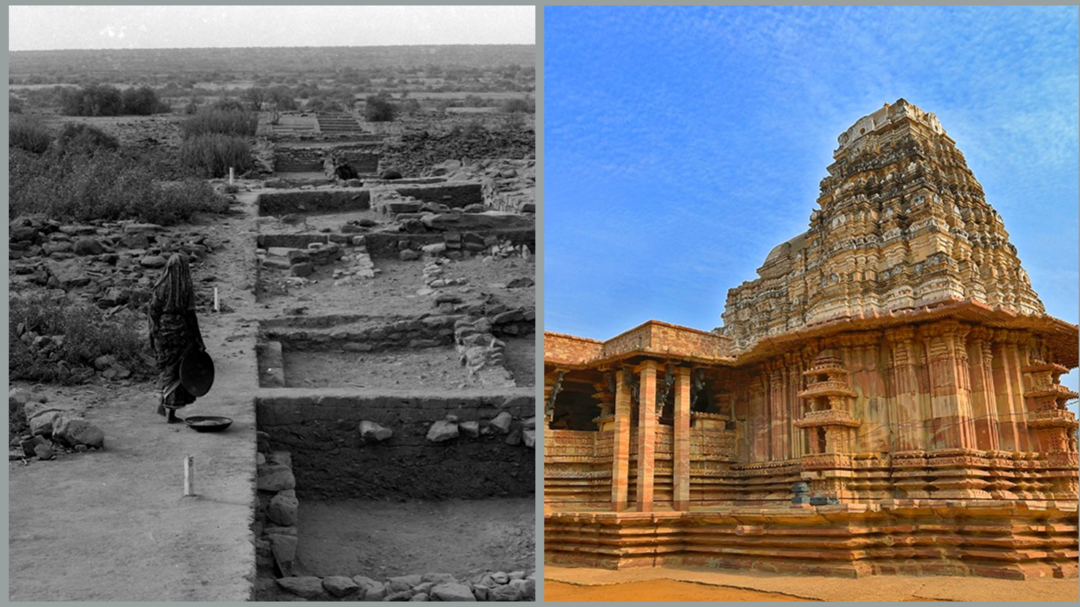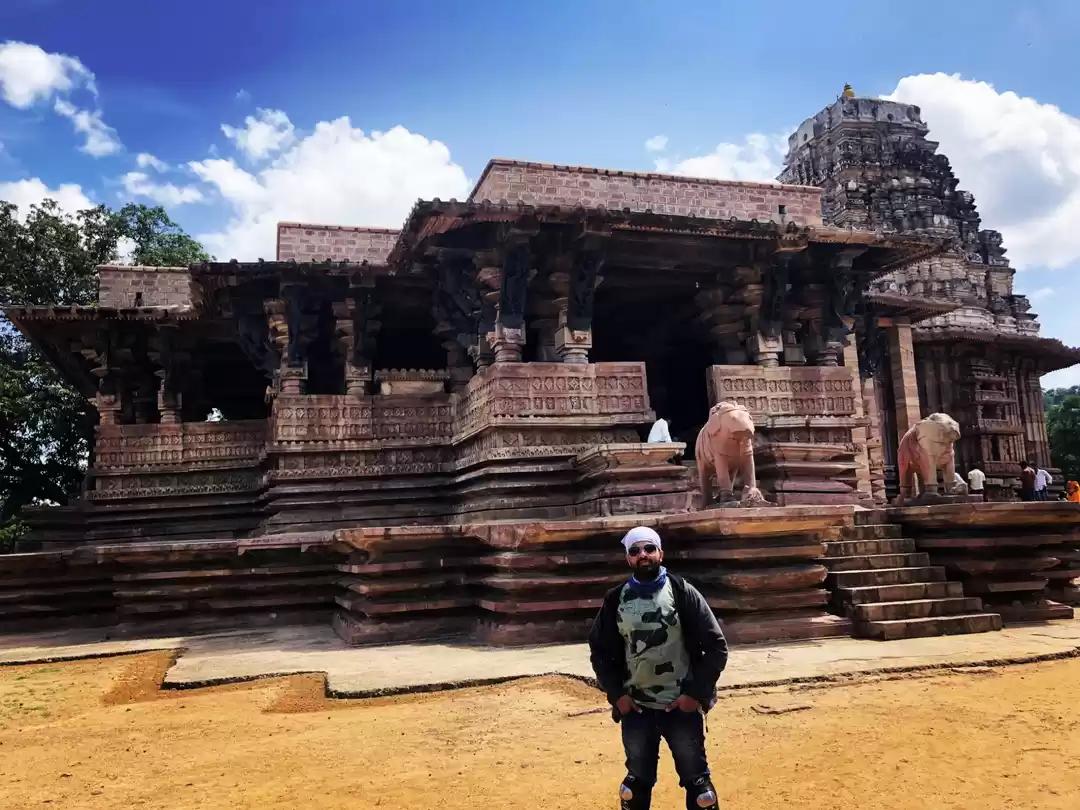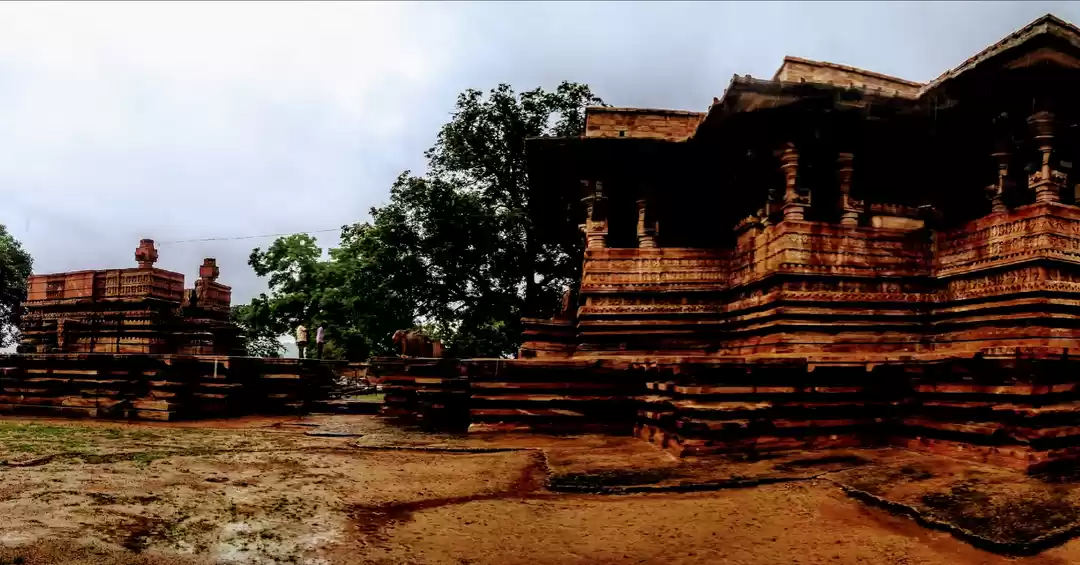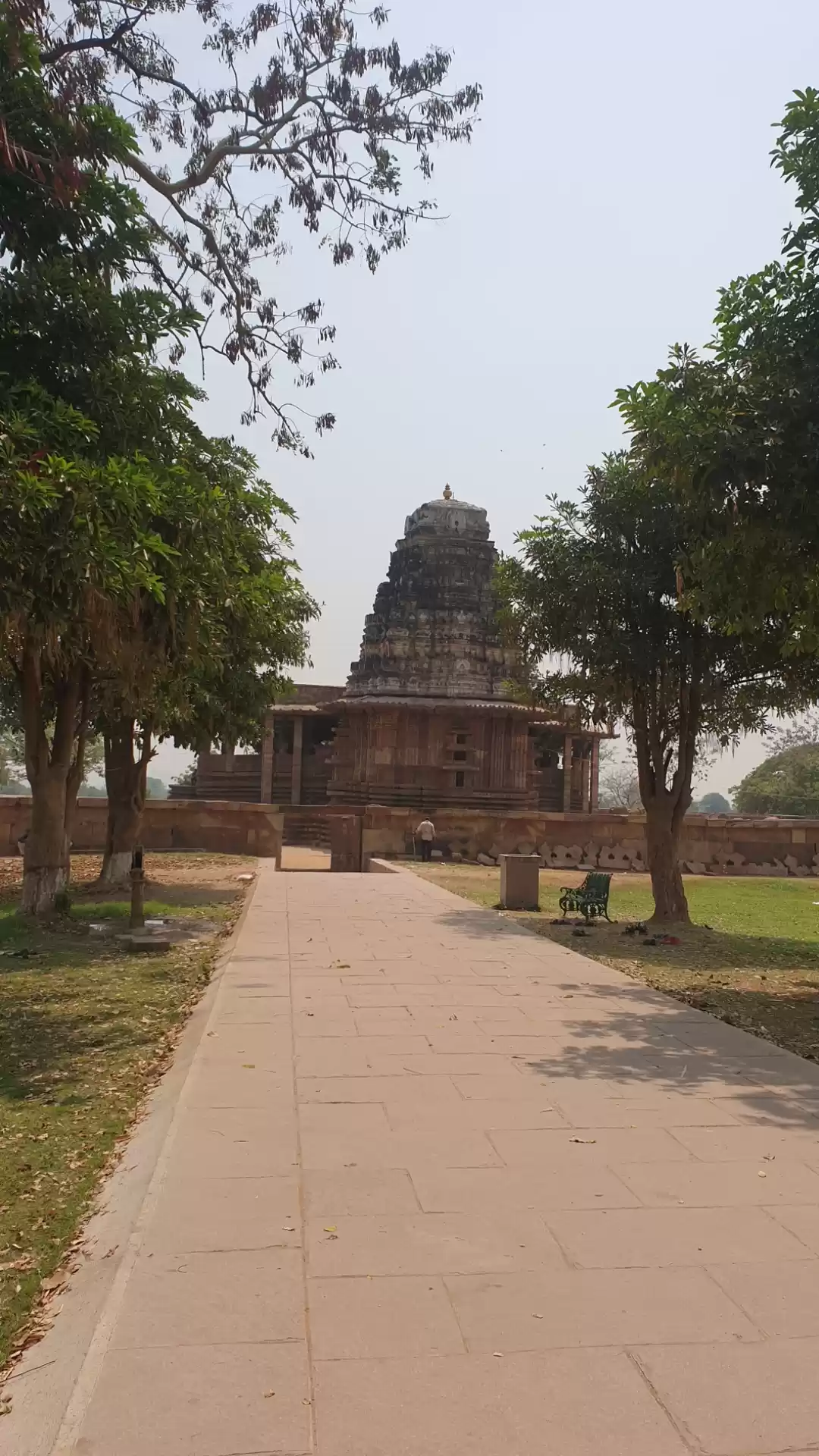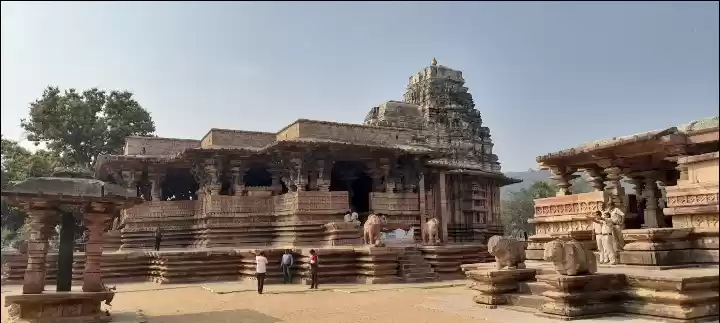Have you ever wondered how a temple built in the 13th century can withstand earthquakes, floods, and invasions for over 800 years? How a temple can have such intricate and exquisite carvings that depict the life and culture of a bygone era? How a temple can have such unique and innovative features that defy the conventional norms of architecture and engineering? If you are curious to know the answers to these questions, then you should visit the Ramappa Temple in Warangal, Telangana.
The Ramappa Temple, also known as the Ramalingeswara Temple, is a marvel of Kakatiya architecture and a UNESCO World Heritage Site. It is one of the finest examples of the artistic and technological achievements of the Kakatiya dynasty, which ruled over a large part of South India from the 12th to the 14th century. The temple was built by a general named Recharla Rudra, under the patronage of King Ganapati Deva, and was named after its chief sculptor, Ramappa.
The temple is dedicated to Lord Shiva and is famous for its rich and intricate carvings, its floating bricks, its musical pillars, and its shivalinga that changes color according to the time of the day. In this article, we will explore the history, architecture, and significance of the Ramappa Temple, and also provide you with some useful information on how to reach, when to visit, and what to see in and around the temple.
History of Ramappa Temple
The Ramappa Temple was built in the 13th century, during the reign of King Ganapati Deva, who was the second ruler of the Kakatiya dynasty. The Kakatiyas were a powerful and influential dynasty that ruled over a large part of South India from the 12th to the 14th century. They were known for their military prowess, administrative reforms, cultural diversity, and artistic excellence. The Kakatiyas built many temples, forts, lakes, and monuments that reflect their glory and legacy. The Ramappa Temple is one of the most prominent and impressive examples of their architectural style and craftsmanship.
The temple was built by a general named Recharla Rudra, who was a loyal and trusted commander of King Ganapati Deva. He was also a patron of art and literature, and commissioned many works of poetry and drama. The temple was named after its chief sculptor, Ramappa, who was a master of stone carving and metal casting. He was assisted by many other skilled artisans and craftsmen, who worked for over 40 years to complete the temple.
The temple was dedicated to Lord Shiva, who was the principal deity of the Kakatiyas. The temple has an inscription in Telugu, which records the name of the builder, the ruler, the sculptor, and the date of completion. The inscription also praises the beauty and grandeur of the temple, and compares it to the celestial abode of the gods.
The temple has survived many natural and man-made calamities, such as earthquakes, floods, and invasions. It has also undergone several repairs and renovations over the centuries, by various rulers and authorities. The temple has been recognized as a monument of national importance by the Archaeological Survey of India, and as a UNESCO World Heritage Site in 2021. The temple is considered as a symbol of the cultural and historical heritage of Telangana, and as a testimony of the genius and creativity of the Kakatiya civilization.
Architecture of Ramappa Temple
The Ramappa Temple is built on a raised platform, which is about 6 feet high and 200 feet long. The platform is made of granite and sandstone, and has a star-shaped plan. The platform has steps on all four sides, which lead to the main entrance of the temple. The entrance is marked by a huge stone arch, which is decorated with floral and geometric motifs. The entrance also has two stone pillars, which support a horizontal beam, which has a carved image of Lord Ganesha, the elephant-headed god of wisdom and success. The entrance leads to the main hall of the temple, which is also known as the mandapa or the nata mandira. The hall is about 100 feet long and 50 feet wide, and has four rows of pillars, which divide the hall into three aisles.
The pillars are made of black basalt, and have intricate carvings of various deities, dancers, musicians, animals, and scenes from Hindu mythology and folklore. The pillars are also hollow and produce musical sounds when tapped. The hall has a flat ceiling, which is also carved with floral and geometric patterns. The hall has windows on all four sides, which allow natural light and air to enter the temple. The hall also has a stage at the center, which was used for performing dance and music. The hall leads to the sanctum of the temple, which is also known as the garbha griha or the womb chamber. The sanctum is about 30 feet long and 15 feet wide, and has a pyramidal roof, which is made of terracotta bricks. The bricks are light and porous, and float on water.

The roof has a circular opening at the top, which allows sunlight to enter the sanctum. The sanctum houses the main idol of the temple, which is a shivalinga, or a cylindrical representation of Lord Shiva. The shivalinga is about 9 feet high and 3 feet wide, and is made of black granite.
The shivalinga changes color according to the time of the day, from red in the morning, to white in the afternoon, to black in the evening. The shivalinga is placed on a pedestal, which has a carved image of a lotus, which symbolizes purity and enlightenment. The sanctum also has a nandi, or a bull, which is the vehicle and companion of Lord Shiva. The nandi is about 6 feet high and 12 feet long, and is made of black basalt. The nandi faces the shivalinga, and has a bell around its neck, which rings when the wind blows. The sanctum also has four smaller shrines, which are dedicated to other forms of Lord Shiva, such as Bhikshatana, Kalyanasundara, Nataraja, and Veerabhadra. The shrines are located at the four corners of the sanctum, and have their own entrances and roofs. The shrines also have their own idols, which are made of stone or metal, and have their own carvings and decorations.
The temple also has other features, such as a pradakshina patha, or a circumambulatory path, which surrounds the sanctum and the hall, and allows the devotees to walk around the temple in a clockwise direction. The path has walls, which are also carved with various images and motifs. The temple also has a water tank, which is located near the platform, and collects rainwater from the roof. The tank has steps, which lead to the water level, and has a fountain, which sprays water in the air. The tank also has a lotus pond, which has aquatic plants and fish. The temple also has a garden, which is located around the temple, and has various trees and flowers.
Getting There
The temple can be reached by various modes of transport, such as road, rail, air, and others. Here are some of the options to reach the temple:
Road:
The temple can be reached by road, by taking a bus, a taxi, or a private vehicle. There are regular buses that ply between Warangal and Palampet, which take about 2 hours to reach the temple. The bus fare is about Rs. 50 per person. There are also taxis that can be hired from Warangal or Hyderabad, which charge about Rs. 10 per km. The taxi fare may vary depending on the type of vehicle and the season. There are also private vehicles that can be rented or driven to the temple, which offer more flexibility and comfort. The road condition is good and scenic, and passes through several villages and fields. The road distance from Warangal to Palampet is about 70 km, and from Hyderabad to Palampet is about 200 km.
Rail:
The temple can be reached by rail, by taking a train to Warangal, and then taking a bus, a taxi, or a private vehicle to Palampet. There are several trains that connect Warangal with major cities in India, such as Hyderabad, Delhi, Mumbai, Chennai, Bangalore, Kolkata, etc. The train fare depends on the class and the destination, and ranges from Rs. 100 to Rs. 2000 per person. The train journey takes about 3 to 4 hours from Hyderabad, and about 10 to 12 hours from Delhi. The train station in Warangal is about 10 km away from the city center, and can be reached by auto rickshaw, which charge about Rs. 20 per person. From there, one can take a bus, a taxi, or a private vehicle to Palampet, as mentioned above.
Air:
The temple can be reached by air, by taking a flight to Hyderabad, and then taking a bus, a taxi, or a private vehicle to Palampet. There are several flights that connect Hyderabad with major cities in India and abroad, such as Delhi, Mumbai, Chennai, Bangalore, Kolkata, Dubai, Singapore, etc. The flight fare depends on the airline and the destination, and ranges from Rs. 2000 to Rs. 20000 per person. The flight duration varies from 1 to 4 hours, depending on the destination. The airport in Hyderabad is about 30 km away from the city center, and can be reached by bus, taxi, or metro, which charge about Rs. 50 to Rs. 500 per person. From there, one can take a bus, a taxi, or a private vehicle to Palampet, as mentioned above.
Places to Visit Near Ramappa Temple
Some of the places nearby that you can explore after visiting Ramappa Temple are:
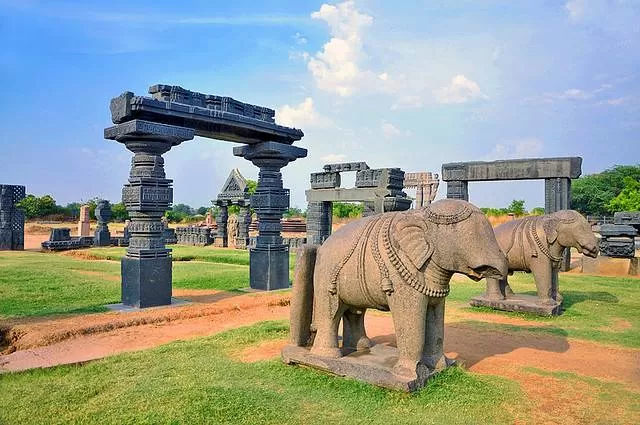
Thousand Pillar Temple:
This is a historic temple built by the Kakatiya rulers in the 12th century. It is famous for its unique architecture, which features 1000 pillars arranged in a star-shaped pattern. The temple is dedicated to Lord Shiva, Lord Vishnu, and Lord Surya, and has many sculptures and carvings of deities, animals, and floral motifs. The temple is located about 48 km from Ramappa Temple, and is open from 6:00 am to 8:00 pm.
Warangal Fort:
This is a massive fort complex that was the capital of the Kakatiya dynasty. It was built by King Ganapati Deva and his daughter Rani Rudrama Devi in the 13th century. The fort has four huge stone gateways, which are decorated with intricate carvings and motifs. The fort also has several temples, palaces, gardens, and ponds within its premises. The fort is located about 48 km from Ramappa Temple, and is open from 10:00 am to 7:00 pm.
GWMC Public Garden, Hanamkonda:
This is a beautiful and well-maintained garden that offers a relaxing and refreshing environment. The garden has various plants, flowers, trees, and lawns, as well as a musical fountain, a children’s play area, a boating lake, and a mini zoo. The garden is located about 49 km from Ramappa Temple, and is open from 4:30 am to 9:00 pm.
Kazipet Railway Stadium:
This is a sports stadium that is owned and operated by the Indian Railways. It is used for various games and events, such as cricket, football, hockey, volleyball, and athletics. The stadium has a capacity of 10,000 spectators, and has a well-equipped gym, a swimming pool, and a jogging track. The stadium is located about 56 km from Ramappa Temple, and is open from 6:00 am to 10:00 pm.
The temple has many features and elements that are worth seeing and admiring, such as the shivalinga, the nandi, the pillars, the carvings, the roof, the shrines, the inscription, and more. The temple is also surrounded by a beautiful and serene environment, which has many natural and man-made attractions, such as the tank, the garden, the hills, the lake, the fort, the wildlife sanctuary, the museum, and more. The temple can be reached by various modes of transport, such as road, rail, air, and others.
The best time to visit the temple is from October to March, when the weather is pleasant and cool, and the temple is more lively and colorful. The temple is open from 6:00 am to 6:00 pm, and the entry fee is Rs. 10 per person. The temple also offers some facilities and amenities, such as parking, toilets, drinking water, and guides. The temple is a place where one can experience the glory of the Kakatiya civilization, and feel the presence of Lord Shiva.
The temple is a place where one can enjoy the beauty and tranquility of nature, and relax and rejuvenate. The temple is a place where one can learn and appreciate the art and craft of the ancient artisans and craftsmen, and marvel at their creativity and innovation. The temple is a place where one can create memories and stories that will last a lifetime. The Ramappa Temple is not just a temple, it is a treasure.













